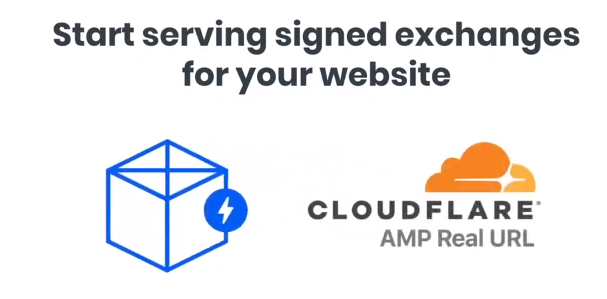How-to video maker Jumprope launches to leapfrog YouTube
Sick of pausing and rewinding YouTube tutorials to replay that tricky part? Jumprope is a new instructional social network offering a powerful how-to video slideshow creation tool. Jumprope helps people make step-by-step guides to cooking, beauty, crafts, parenting and more using voice-overed looping GIFs for each phase. And creators can export their whole lesson for sharing on Instagram, YouTube or wherever.
Jumprope officially launches its iOS app today with plenty of how-tos for making chocolate chip bars, Easter eggs, flower boxes or fierce eyebrows. “By switching from free-form linear video to something much more structured, we can make it much easier for people to share their knowledge and hacks,” says Jumprope co-founder and CEO Jake Poses.

The rise of Snapchat Stories and Pinterest have made people comfortable jumping on camera and showing off their niche interests. By building a new medium, Jumprope could become the home for rapid-fire learning. And because viewers will have tons of purchase intent for the makeup, art supplies or equipment they’ll need to follow along, Jumprope could make serious cash off ads or affiliate commerce.
The opportunity to bring instruction manuals into the mobile video era has attracted a $4.5 million seed round led by Lightspeed Venture Partners and joined by strategic angels like Adobe Chief Product Officer Scott Belsky and Thumbtack co-founders Marco Zappacosta and Jonathan Swanson. People are already devouring casual education content on HGTV and the Food Network, but Jumprope democratizes its creation.
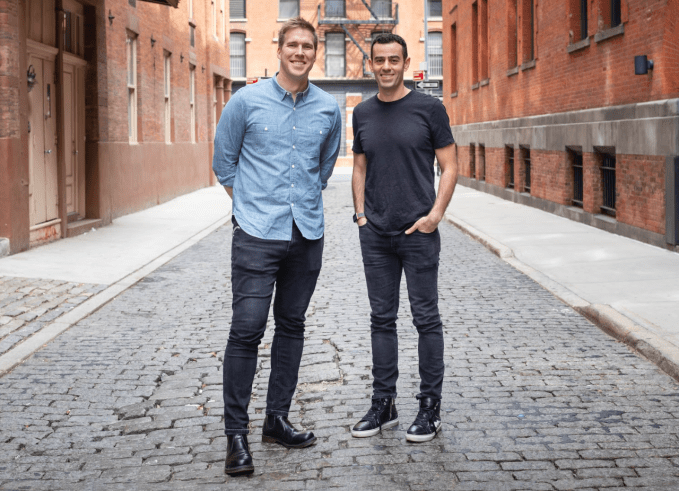
Jumprope co-founders (from left): CTO Travis Johnson and CEO Jake Poses
The idea came from a deeply personal place for Poses. “My brother has pretty severe learning differences, and so growing up with him gave me this appreciation for figuring out how to break things down and explain them to people,” Poses reveals. “I think that attached me to this problem of ‘how do you organize information so it’s simple and easy to understand?’ Lots and lots of people have this information trapped in their heads because there isn’t a way to easily share that.”
Poses was formerly the VP of Product at Thumbtack where he helped grow the company from 8 to 500 people and a $1.25 billion valuation. He teamed up with AppNexus’ VP of engineering Travis Johnson, who’d been leading a 50-person team of coders. “The product takes people who have knowledge and passion but not the skill to make video [and gives them] guard rails that make it easy to communicate,” Poses explains.
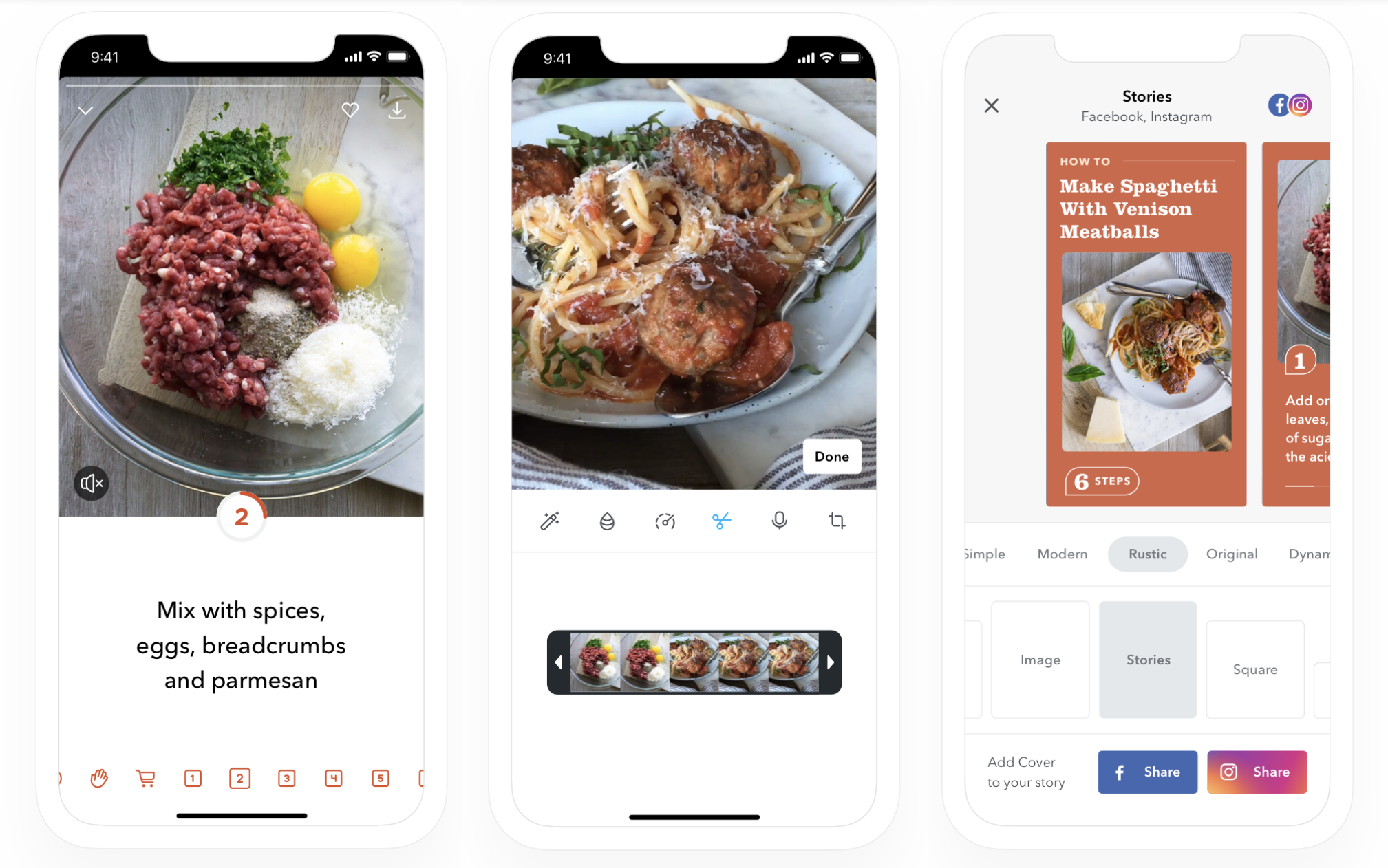
Disrupting incumbents like YouTube’s grip on viewers might take years, but Jumprope sees its guide creation and export tool as a way to infiltrate and steal their users. That strategy mirrors how TikTok’s watermarked exports colonized the web.
How to make a Jumprope
Jumprope lays out everything you’ll need to upload, including a cover image, introduction video, supplies list and all your steps. For each, you’ll record a video that you can then enhance with voice-over, increased speed, music and filters.
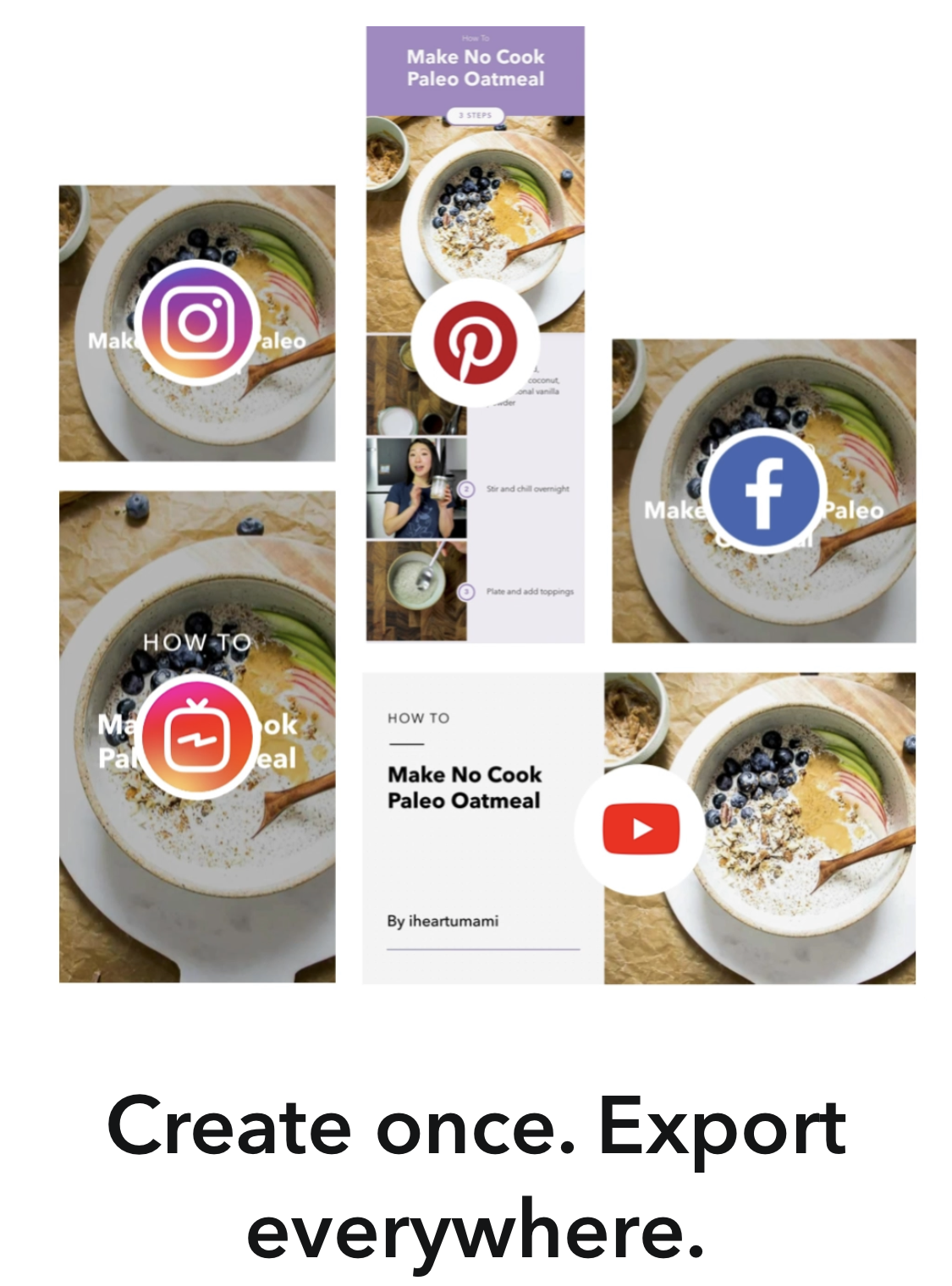 Creators are free to suggest their own products or enter affiliate links to monetize their videos. Once it has enough viewers, Jumprope plans to introduce advertising, but it could also add tipping, subscriptions, paid how-tos or brand sponsorship options down the line. Creators can export their lessons with five different border themes and seven different aspect ratios for posting to Instagram’s feed, IGTV, Snapchat Stories, YouTube or embedding on their blog.
Creators are free to suggest their own products or enter affiliate links to monetize their videos. Once it has enough viewers, Jumprope plans to introduce advertising, but it could also add tipping, subscriptions, paid how-tos or brand sponsorship options down the line. Creators can export their lessons with five different border themes and seven different aspect ratios for posting to Instagram’s feed, IGTV, Snapchat Stories, YouTube or embedding on their blog.
“Like with Stories, you basically tap through at your own pace,” Poses says of the viewing experience. Jumprope offers some rudimentary discovery through categories, themed collections or what’s new and popular. The startup has done extensive legwork to sign up featured creators in all its top categories. That means Jumprope’s catalog is already extensive, with food guides ranging from cinnabuns to pot roasts to how to perfectly chop an onion.
“You’re not constantly dealing with the frustration of cooking something and trying to start and stop the video with greasy hands. And if you don’t want all the details, you can tap through it much faster” than trying to skim a YouTube video or blog post, Poses tells me. Next the company wants to build a commenting feature where you can leave notes, substitution suggestions and more on each step of a guide.

Poses claims there’s no one building a direct competitor to its mobile video how-to editor. But he admits it will be an uphill climb to displace viewership on Instagram and YouTube. One challenge facing Jumprope is that most people aren’t hunting down how-to videos every day. The app will have to work to remind users it exists and that they shouldn’t just go with the lazy default of letting Google recommend the videos it hosts.
The internet has gathered communities around every conceivable interest. But greater access to creation and consumption necessitates better tools for production and curation. As we move from a material to an experiential culture, people crave skills that will help them forge memories and contribute to the world around them. Jumprope makes it a lot less work to leap into the life of a guru.
You can watch my first Jumprope here or below to learn how to tie up headphones without knots:
Powered by WPeMatico
The Exit: an AI startup’s McPivot
Five years ago, Dynamic Yield was courting an investment from The New York Times as it looked to shift how publishers paywalled their content. Last month, Chicago-based fast food king McDonald’s bought the Israeli company for $300 million, a source told TechCrunch, with the purpose of rethinking how people order drive-thru chicken nuggets.
The pivot from courting the grey lady to the golden arches isn’t as drastic as it sounds. In a lot of ways, it’s the result of the company learning to say “no” to certain customers. At least, that’s what Bessemer’s Adam Fisher tells us.
The Exit is a new series at TechCrunch. It’s an exit interview of sorts with a VC who was in the right place at the right time but made the right call on an investment that paid off.

Fisher
Fisher was Dynamic Yield founder Liad Agmon’s first call when he started looking for funds from institutional investors. Bessemer bankrolled the bulk of a $1.7 million funding round which valued the startup at $5 million pre-money back in 2013. The firm ended up putting about $15 million into Dynamic Yield, which raised ~$85 million in total from backers including Marker Capital, Union Tech Ventures, Baidu and The New York Times.
Fisher and I chatted at length about the company’s challenging rise and how Israel’s tech scene is still being underestimated. Fisher has 11 years at Bessemer under his belt and 14 exits including Wix, Intucell, Ravello and Leaba.
The interview has been edited for length and clarity.
Saying “No”
Lucas Matney: So, right off the bat, how exactly did this tool initially built for publishers end up becoming something that McDonalds wanted?
Adam Fisher: I mean, the story of Dynamic Yield is unique. Liad, the founder and CEO, he was an entrepreneur in residence in our Herzliya office back in 2011. I’d identified him earlier from his previous company, and I just said, ‘Well, that’s the kind of guy I’d love to work with.’ I didn’t like his previous company, but there was something about his charisma, his technology background, his youth, which I just felt like “Wow, he’s going to do something interesting.” And so when he sold his previous company, coincidentally to another Chicago based company called Sears, I invited him and I think he found it very flattering, so he joined us as an EIR.
And really only at the very end of his residence did he come up with this idea that would become Dynamic Yield. He came about it very much focused on the problem he saw with publishers being outwitted by ad buyers. He felt like all the big publishers really didn’t understand their digital businesses, didn’t understand their users, didn’t understand how performance ad buying was working, and he began to build a product that could dynamically optimize a publisher’s website to maximize revenue, hence the yield … the dynamic yield.
But very quickly, we told him, ‘That’s interesting, but we’re not sure how big that market is. And, you know it’s not always great to sell to those kind of weak customers. Sometimes they’re weak for a reason.’
Powered by WPeMatico
Apple may combine ‘Find My iPhone’ & ‘Find My Friends’ apps, launch a Tile-like tracking device
Apple is working to combine its tracking apps “Find My iPhone” and “Find My Friends” into one unified app available on both iOS and Mac, according to a new report from the Apple news site 9to5Mac. In addition, the report says, Apple is developing a hardware product that can be attached to other items that Apple customers want to track — similar to what the Bluetooth tracker Tile offers today.
The idea is the new, unified app would then serve as a way to track anything — Apple devices, other important items like a handbag or backpack, as well as the location of family members and trusted friends. And all of this information would be securely synced to iCloud.
Meanwhile, the new hardware — codenamed “B389,” the report says — would represent a threat to Tile and other Bluetooth trackers on the market, as Apple would be able to capitalize on its massive install base of iPhones and other Apple devices to develop its own crowdsourced tracking-and-finding network.
The new hardware tag will be paired to a user’s iCloud account and users will be able to receive notifications when a device, like their iPhone, gets too far away from the tag. Users will also be able to configure locations to be ignored, and can opt to share a tag’s location with friends or family.
And like Tile, when the item with the tag attached goes missing, users could then put the tag into a “Lost” mode that would alert the owner when it’s found. The “finding” takes place by way of a crowdsourced network that includes every other Apple device owner who’s opted in to use this same tracking service, it would seem.
A large crowdsourced network is today one of Tile’s key advantages.
To date, the company has sold 24 million Tiles, which now connect to 4 million items daily with a 90 percent success rate, thanks to its own community-find feature. A competitive product from Apple could eat away at Tile’s business, while also serving as a new source of device revenue for Apple — and perhaps subscription revenues, too, for access to the crowd-finding network.
The reported merger of Apple’s two tracking applications comes at a time when Apple is rethinking how it wants to position its apps. Another recent report from 9to5Mac had confirmed Apple’s plans to break up iTunes, and instead bring new Music, podcasts and TV apps to Mac users. Apple will revamp its Books app as part of these changes, too, the report said.
It’s worth noting that there’s a big leak at Apple right now, and 9to5Mac is benefiting.
In addition to the news about the unified apps, Tile-like tracker and the breakup of iTunes, the site also leaked a big preview of iOS 13, which is said to include a system-wide dark mode, new gestures, visual changes and more. And just yesterday, the site reported that Apple is working on a feature that will allow users to pair a Mac with an iPad to use as a secondary display — something offered today by companies like Luna Display or Duet Display.
As for the new, unified “Find My…” app and hardware tag, no timeline to a public release is yet known.
Powered by WPeMatico
EAT Club acquires Taro to expand its corporate lunch program
EAT Club, the lunch delivery service that counts companies like Facebook, Postmates and others as customers, has acquired meal delivery service Taro. Financial terms of the deal were not disclosed.
Taro’s business model worked by shipping pre-made meals directly to consumers. With the acquisition, however, Taro will no longer serve customers directly. Instead, it will be folded into EAT Club’s corporate program that enables employees to select their individually packed lunch.
“EAT Club is the only food delivery service for businesses that treats eating in the workplace as a personalized culinary experience,” Taro co-founder and CEO Krishna Mehra said in a statement. “When we set out to expand our reach and distribution beyond family dinners, EAT Club emerged as a natural partner with its unique approach of delivering employees individualized selection within a collaborative atmosphere. EAT Club is making it possible for thousands of new workers to experience Taro’s food and flavors, and we are proud to join forces with them in increasing workplace satisfaction.”
What attracted EAT Club to Taro was its emphasis on healthy, authentic meals, and its approach to managing food production and distribution, EAT Club CEO Doug Leeds told TechCrunch.
“They’ve built some really interesting things we want to keep competitively secret on the equipment side,” Leeds said. “From top to bottom, we were pretty excited about what we were seeing at Taro. We’re going to take their people, tech, recipes and food production processes, and apply them to our existing customers.”
Leeds, the former CEO of IAC Publishing, joined EAT Club last year. Despite his short tenure, this marks the second acquisition under his leadership. Last year, EAT Club acquired lunch box delivery service Farm Hill.
EAT Club has served more than 17 million meals to employees to date, which comes out to about 25,000 meals a day. Given the amount of energy required for that level of production, EAT Club has implemented what it’s calling a Zero Carbon Initiative. Through the initiative, EAT Club will offset its carbon footprint by matching its electricity usage with renewable energy generation. EAT Club also plans to make all of its packaging either recyclable or compostable and support landfill recapture programs.
“By far, the biggest carbon impact of our business is in the delivery — the transportation aspect,” Leeds said. “But we wanted to go further than that. In our production, it was in all of the energy we used to cook food. We wanted to see what is the actual carbon footprint of the entire operation.”
On the employee-side, EAT Club plans to provide stronger commuter benefits and is looking to move its Los Angeles-based office to a location closer to the metro line, Leeds said. To date, EAT Club has raised more than $46 million from investors like August Capital, Trinity Ventures and Sodexo Ventures.
Powered by WPeMatico
Airbase launches with $7M Series A to simplify spending control systems
Airbase is a startup with a plan to change the way you think about accounting around spending. Instead of multiple workflows, it wants to create a simpler one involving, well, Airbase. It’s a bold move for any startup to take on something as entrenched as financials, but it’s giving it a shot, and today the company launched with a $7 million Series A investment.
First Round Capital was lead investor. Maynard Webb, Village Global, BoxGroup and Quiet Capital also participated. The deal closed at the end of November last year. This is the first external funding for the company, which company founder and CEO Thejo Kote had bootstrapped previously with $300,000 of his own money.
“At a high level, Airbase is the first all-in-one spend management system. It replaces a number of different systems that companies use to manage how they spend money,” Kote told TechCrunch.
He knows of what he speaks. Prior to starting this company, Kote co-founded Automatic, a startup that he sold to SiriusXM for more than $100 million in 2017. As a founder, he saw just how difficult it was to track the vast variety of spending inside a company, from supplies to subscriptions to food and drink.
“Think about the hundreds of things that companies spend money on, and the way in which the management of that happens is a pretty broken process today,” he said. For starters, it usually involves some sort of approval request in a tool like Slack, Jira or Google forms.
Once approved, the person requesting the expense will put that on a company credit card, then have to submit expense reports at the end of each month using a tool like Expensify. If you purchase from a vendor, then that involves an invoice and that has to be processed and paid. Finally it would need to be reconciled and accounted for in accounting software. Each step of this process ends up being time-consuming and costly for an organization.
Kote’s idea was to take this process and streamline it by removing the friction, which he saw as being related to the disparate systems in place to get the work done. He believed by creating a single workflow on a unified, single platform he could create a smoother system for everyone involved.
He is putting that single system between the bank and the accounting system, including a virtual Airbase Visa card that can take the place of physical cards if desired. Request for spending happens inside Airbase instead of an external tool. When the virtual card gets charged, bookkeeping and reconciliation gets handled in Airbase and pushed to your accounting package of choice.
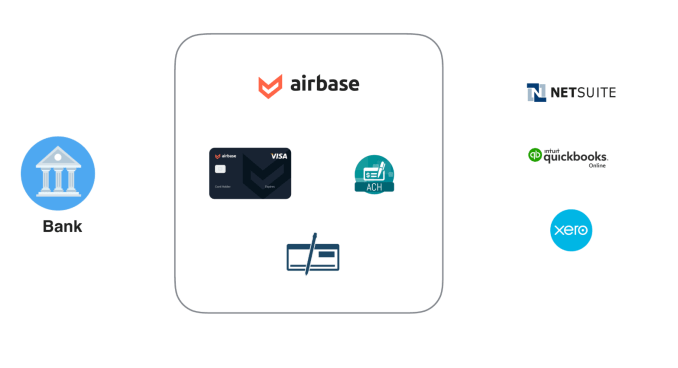
Airbase workflow. Diagram: Airbase
This could be a difficult proposition for companies with existing systems in place, but could be attractive to startups and small companies whose accounting systems have not yet hardened. Perhaps that’s why most of Airbase’s customers are startups or SMBs with between 50 and 1000 employees, such as Gusto, Netlify and Segment.
Bill Trenchard, general partner at lead investor First Round Capital, says he has seen very little innovation in this space and that’s what drew him to Airbase. “Airbase has taken a bold step forward to create an entirely new paradigm. It delivers a real solution to the biggest problems finance teams face as their companies grow,” Trenchard said in a statement.
The company was founded in 2017 and has 22 employees. It has a sales office in San Francisco, but other employees are spread across four countries.
Powered by WPeMatico
Meet the first judges for The Europas Awards (27 June) and enter your startup now!
I’m excited to announce that The Europas Awards for European Tech Startups is really shaping up! The awards will be held on 27 June 2019, in London, U.K. on the front lawn of the Geffrye Museum in Hoxton, London — creating a fantastic and fun garden party atmosphere in the heart of London’s tech startup scene.
TechCrunch is once more the exclusive media sponsor of the awards and conference, alongside new “tech, culture & society” event creator The Pathfounder.
Here’s how to enter and be considered for the awards.
You can nominate a startup, accelerator or venture investor that you think deserves to be recognized for their achievements in the last 12 months.
*** The deadline for nominations is 1 May 2019 ***
For the 2019 awards, we’ve overhauled the categories to a set that we believe better reflects the range of innovation, diversity and ambition we see in the European startups being built and launched today. There are now 20 categories, including new additions to cover AgTech / FoodTech, SpaceTech, GovTech and Mobility Tech.
Attendees, nominees and winners will get discounts to TechCrunch Disrupt in Berlin, later this year.
The Europas “Diversity Pass”
We’d like to encourage more diversity in tech! That’s why, for the upcoming invitation-only “Pathfounder” event held on the afternoon before The Europas Awards, we’ve reserved a tranche of free tickets to ensure that we include more women and people of colour who are “pre-seed” or “seed-stage” tech startup founders. If you are a women founder or person of colour founder, apply here for a chance to be considered for one of the limited free diversity passes to the event.
The Pathfounder event will feature premium content and invitees, designed be a “fast download” into the London tech scene for European founders looking to raise money or re-locate to London.
The Europas Awards
The Europas Awards results are based on voting by expert judges and the industry itself.
But key to it is that there are no “off-limits areas” at The Europas, so attendees can mingle easily with VIPs.
The complete list of categories is here:
- AgTech / FoodTech
- CleanTech
- Cyber
- EdTech
- FashTech
- FinTech
- Public, Civic and GovTech
- HealthTech
- MadTech (AdTech / MarTech)
- Mobility Tech
- PropTech
- RetailTech
- Saas/Enterprise or B2B
- SpaceTech
- Tech for Good
- Hottest Blockchain Project
- Hottest Blockchain Investor
- Hottest VC Fund
- Hottest Seed Fund
- Grand Prix
Timeline of The Europas Awards deadlines:
* 6 March 2019 – Submissions open
* 1 May 2019 – Submissions close
* 10 May 2019 – Public voting begins
* 18 June 2019 – Public voting ends
* 27 June 2019 – Awards Bash
Amazing networking
We’re also shaking up the awards dinner itself. Instead of a sit-down gala dinner, we’ve taken feedback for more opportunities to network. Our awards ceremony this year will be in the setting of a garden lawn party, where you’ll be able to meet and mingle more easily, with free-flowing drinks and a wide-selection of street food (including vegetarian/vegan). The ceremony itself will last approximately 75 minutes, with the rest of the time dedicated to networking. If you’d like to talk about sponsoring or exhibiting, please contact dianne@thepathfounder.com
Instead of thousands and thousands of people, think of a great summer event with the most interesting and useful people in the industry, including key investors and leading entrepreneurs.
The Europas Awards have been going for the last 10 years, and we’re the only independent and editorially driven event to recognise the European tech startup scene. The winners have been featured in Reuters, Bloomberg, VentureBeat, Forbes, Tech.eu, The Memo, Smart Company, CNET, many others — and of course, TechCrunch.
• No secret VIP rooms, which means you get to interact with the speakers
• Key founders and investors attending
• Journalists from major tech titles, newspapers and business broadcasters
Meet the first set of our 20 judges:
Brent Hoberman
Executive Chairman and Co-Founder
Founders Factory
Videesha Böckle
Founding Partner
signals Venture Capital

Bindi Karia
Innovation Expert + Advisor, Investor
Bindi Ventures

Christian Hernandez Gallardo
Co-Founder and Venture Partner at White Star Capital
Powered by WPeMatico
Google starts rolling out better AMP URLs
Publishers don’t always love Google’s AMP pages, but readers surely appreciate their speed, and while publishers are loath to give Google more power, virtually every major site now supports this format. One AMP quirk that publisher’s definitely never liked is about to go away, though. Starting today, when you use Google Search and click on an AMP link, the browser will display the publisher’s real URLs instead of an “http//google.com/amp” link.
This move has been in the making for well over a year. Last January, the company announced that it was embarking on a multi-month effort to load AMP pages from the Google AMP cache without displaying the Google URL.
At the core of this effort was the new Web Packaging standard, which uses signed exchanges with digital signatures to let the browser trust a document as if it belongs to a publisher’s origin. By default, a browser should reject scripts in a web page that try to access data that doesn’t come from the same origin. Publishers will have to do a bit of extra work, and publish both signed and un-signed versions of their stories.
Quite a few publishers already do this, given that Google started alerting publishers of this change in November 2018. For now, though, only Chrome supports the core features behind this service, but other browsers will likely add support soon, too.
For publishers, this is a pretty big deal, given that their domain name is a core part of their brand identity. Using their own URL also makes it easier to get analytics, and the standard grey bar that sits on top of AMP pages and shows the site you are on now isn’t necessary anymore because the name will be in the URL bar.
To launch this new feature, Google also partnered with Cloudflare, which launched its AMP Real URL feature today. It’ll take a bit before it will roll out to all users, who can then enable it with a single click. With this, the company will automatically sign every AMP page it sends to the Google AMP cache. For the time being, that makes Cloudflare the only CDN that supports this feature, though others will surely follow.
“AMP has been a great solution to improve the performance of the internet and we were eager to work with the AMP Project to help eliminate one of AMP’s biggest issues — that it wasn’t served from a publisher’s perspective,” said Matthew Prince, co-founder and CEO of Cloudflare. “As the only provider currently enabling this new solution, our global scale will allow publishers everywhere to benefit from a faster and more brand-aware mobile experience for their content.”
Powered by WPeMatico
New registrations for electric vehicles doubled in US since last year
Electric vehicles, still a small percentage of the total automotive market in the U.S., are beginning to gain ground, according to analysis by IHS Markit.
There were 208,000 new registrations for electric vehicles in the U.S. last year, more than double the number filed in 2017, IHS said Monday.
That growth in EVs was heavily concentrated in California, as well as nine other states that have adopted the Zero Emission Vehicle program. California was the first to launch the ZEV program‚ a state regulation that requires automakers to sell electric cars and trucks there. Connecticut, Maine, Maryland, Massachusetts, New Jersey, New York, Oregon, Rhode Island and Vermont are also ZEV states.
California accounted for nearly 46 percent, or 95,000, of new EV registrations in 2018, IHS said. California has 59 percent of market share of registered electric vehicles in the U.S.
Those numbers are expected to push even higher over the next two years as more electric vehicles come on the market and an increasing number of existing EV owners stick with the technology.
More than 350,000 new EVs will be sold in the U.S. in 2020. Those figures will give EVs a still tiny 2 percent share of the total U.S. fleet. By 2025, that figure is expected to rise to more than 1.1 million vehicles sold, or a 7 percent share, according to recent IHS Markit.
The Tesla’s Model 3 is the top-selling all-electric in the U.S. so far this year, followed by the Chevy Bolt, Tesla Model X, Tesla Model S and the Nissan Leaf, according to estimates by Inside EVs. More EVs are just now coming onto the market, or about to in the coming months , including the Kia Niro EV and Hyundai Kona EV. Startup Rivian expects to start production in 2020.
“A rapid increase in EV nameplates is the catalyst behind the projected growth throughout the next decade,” Devin Lindsay, IHS Markit powertrain analyst said in a statement. “While relatively successful models such as the Tesla Model 3 mature in the market, other traditional automakers will be rolling out not just one EV as we have seen in the past, but multiple models off dedicated EV platforms.”
IHS found that loyalty rates for EVs have also increased, with nearly 55 percent of all new EV owners who returned to market during the fourth quarter of 2018 acquiring (purchasing or leasing) another EV, up from 42 percent in the prior quarter.
Powered by WPeMatico
Birth control delivery startup Nurx taps Clover Health’s Varsha Rao as CEO
Varsha Rao, Airbnb’s former head of global operations and, most recently, the chief operating officer at Clover Health, has joined Nurx as its chief executive officer.
Rao replaces Hans Gangeskar, Nurx’s co-founder and CEO since 2014, who will stay on as a board member.
Nurx, which sells birth control, PrEP, the once-daily pill that reduces the risk of getting HIV, and an HPV testing kit direct to consumer, has grown 250 percent in the last year, doubled its employee headcount and attracted 200,000 customers. Rao tells TechCrunch the startup realized they needed talent in the C-suite that had experienced this kind of growth.
“The company has made some really great progress in bringing on strong leaders and that’s one of the things that got me excited about joining,” Rao told TechCrunch. Nurx recently hired Jonathan Czaja, Stitch Fix’s former vice president of operations, as COO, and Dave Fong, who previously oversaw corporate pharmacy services at Safeway, as vice president of pharmacy.
Rao, for her part, joined Clover Health, a Medicare Advantage startup backed by Alphabet, in late 2017 after three years at Airbnb.
“After being at Airbnb, a really mission-driven company, I couldn’t go back to something that wasn’t equally or more so and healthcare really inspired me,” Rao said. “In terms of accessibility, I feel like [Nurx] is super important. We are really fortunate to live in a place where can access birth control and it can be more easily found but there are lots of parts of the country where physical access is challenging and costs can be a factor. To be able to break down barriers of access both physically and from an economic standpoint is hugely meaningful to me.”
Nurx, a graduate of Y Combinator, has raised about $42 million in venture capital funding from Kleiner Perkins, Union Square Ventures, Lowercase Capital and others. It launched in 2015 to facilitate women’s access to birth control across the U.S. with a HIPAA-compliant web platform and mobile application that delivers contraceptives directly to customers’ doorsteps.
Today, the telehealth startup is available to customers in 24 states and counts Chelsea Clinton as a board member.
Powered by WPeMatico
Kindbody raises $15M, will open a ‘Fertility Bus’ with mobile testing & assessments
Kindbody, a startup that lures millennial women into its pop-up fertility clinics with feminist messaging and attractive branding, has raised a $15 million Series A in a round co-led by RRE Ventures and Perceptive Advisors.
The New York-based company was founded last year by Gina Bartasi, a fertility industry vet who previously launched Progyny, a fertility benefit solution for employers, and FertilityAuthority.com, an information platform and social network for people struggling with fertility.
“We want to increase accessibility,” Bartasi told TechCrunch. “For too long, IVF and fertility treatments were for the 1 percent. We want to make fertility treatment affordable and accessible and available to all regardless of ethnicity and social economic status.”
Kindbody operates a fleet of vans — mobile clinics, rather — where women receive a free blood test for the anti-Müllerian hormone (AMH), which helps assess their ovarian egg reserve but cannot conclusively determine a woman’s fertility. Depending on the results of the test, Kindbody advises women to visit its brick-and-mortar clinic in Manhattan, where they can receive a full fertility assessment for $250. Ultimately, the mobile clinics serve as a marketing strategy for Kindbody’s core service: egg freezing.
Kindbody charges patients $6,000 per egg-freezing cycle, a price that doesn’t include the cost of necessary medications but is still significantly less than market averages.
Bartasi said the mobile clinics have been “wildly popular,” attracting hoards of women to its brick-and-mortar clinic. As a result, Kindbody plans to launch a “fertility bus” this spring, where the company will conduct full fertility assessments, including the test for AMH, a pelvic ultrasound and a full consultation with a fertility specialist.
In other words, Kindbody will offer all components of the egg-freezing process on a bus aside from the actual retrieval, which occurs in Kindbody’s lab. The bus will travel around New York City before heading west to San Francisco, where it plans to park on the campuses of large employers, catering to tech employees curious about their fertility.
“Our mission at Kindbody is to bring care directly to the patient instead of asking the patient to come to visit us and inconvenience them,” Bartasi said.

A sneak peek of Kindbody’s “fertility bus,” which is still in the works
Kindbody, which has raised $22 million to date from Green D Ventures, Trailmix Ventures, Winklevoss Capital, Chelsea Clinton, Clover Health co-founder Vivek Garipalli and others, also provides women support getting pregnant with in vitro fertilisation (IVF) and intrauterine insemination (IUI).
With the latest investment, Kindbody will open a second brick-and-mortar clinic in Manhattan and its first permanent clinic in San Francisco. Additionally, Bartasi says they are in the process of closing an acquisition in Los Angeles that will result in Kindbody’s first permanent clinic in the city. Soon, the company will expand to include mental health, nutrition and gynecological services.
In an interview with The Verge last year, Bartasi said she’s taken inspiration from SoulCycle and DryBar, companies whose millennial-focused branding strategies and prolific social media presences have helped them accumulate customers. Kindbody, in that vein, notifies its followers of new pop-up clinics through its Instagram page.
In the article, The Verge called Kindbody “the SoulCycle of fertility” and questioned its branding strategy and its claim that egg freezing “freezes time.” After all, there is limited research confirming the efficacy of egg freezing.
“The technology that allows for egg-freezing has only been widely used in the last five to six years,” Bartasi explained. “The majority of women who froze their eggs haven’t used them yet. It’s not like you freeze your eggs in February and meet Mr. Right in June.”
Though Kindbody touts a mission of providing fertility treatments to the 99 percent, there’s no getting around the sky-high costs of the services, and one might argue that companies like Kindbody are capitalizing off women’s fear of infertility. Providing free AMH tests, which often falsely lead women to believe they aren’t as fertile as they’d hoped, might encourage more women to seek a full-fertility assessment and ultimately, to pay $6,000 to freeze their eggs, when in reality they are just as fertile as the average woman and not the ideal candidate for the difficult and uncomfortable process.
Bartasi said Kindbody makes all the options clear to its patients. She added that when she does hear accusations that services like Kindbody capitalize on fear of infertility, they tend to come from legacy programs and male fertility doctors: “They are a little rattled by some of the new entrants that look like the patients,” she said. “We are women designing for women. For far too long women’s health has been solved for by men.”

Kindbody’s pricing scheme may itself instill fear in incumbent fertility clinics. The startup’s egg-freezing services are much cheaper than market averages; its IVF services, however, are not. Not including the costs of medications necessary to successfully harvest eggs from the ovaries, the average cost of an egg-freezing procedure costs approximately $10,000, compared to Kindbody’s $6,000. Its IVF services are on par with other options in the market, costing $10,000 to $12,000 — not including medications — for one cycle of IVF.
Kindbody is able to charge less for egg freezing because they’ve cut out operational inefficiencies, i.e. they are a tech-enabled platform while many fertility clinics around the U.S. are still handing out hoards of paperwork and using fax machines. Bartasi admits, however, that this means Kindbody is making less money per patient than some of these legacy clinics.
“What is a reasonable profit margin for fertility doctors today?” Bartasi said. “Historically, margins have been very, very high, driven by a high retail price. But are these really high retail prices sustainable long term? If you’re charging 22,000 for IVF, how long is that sustainable? Our profit margins are healthy.”
Bartasi isn’t the only entrepreneur to catch on to the opportunity here, as I’ve noted. A whole bunch of women’s health startups have launched and secured funding recently.
Tia, for example, opened a clinic and launched an app that provides health advice and period tracking for women. Extend Fertility, which like Kindbody, helps women preserve their fertility through egg freezing, banked a $15 million round. And a startup called NextGen Jane, which is trying to detect endometriosis with “smart tampons,” announced a $9 million Series A a few weeks ago.
Powered by WPeMatico




